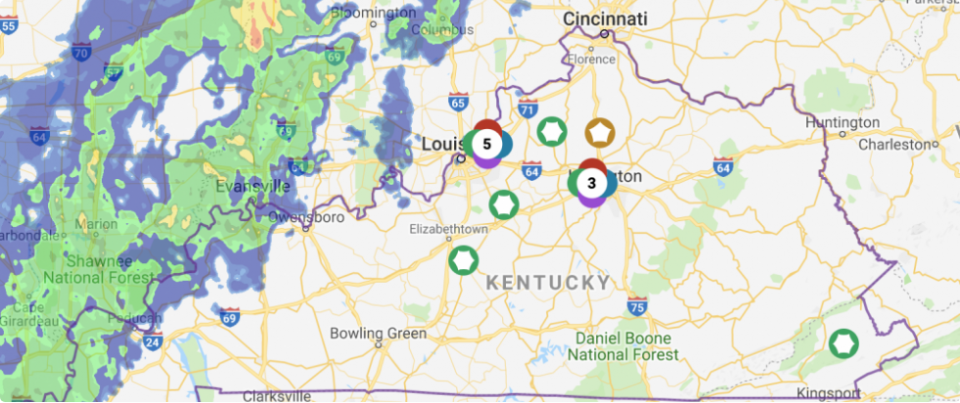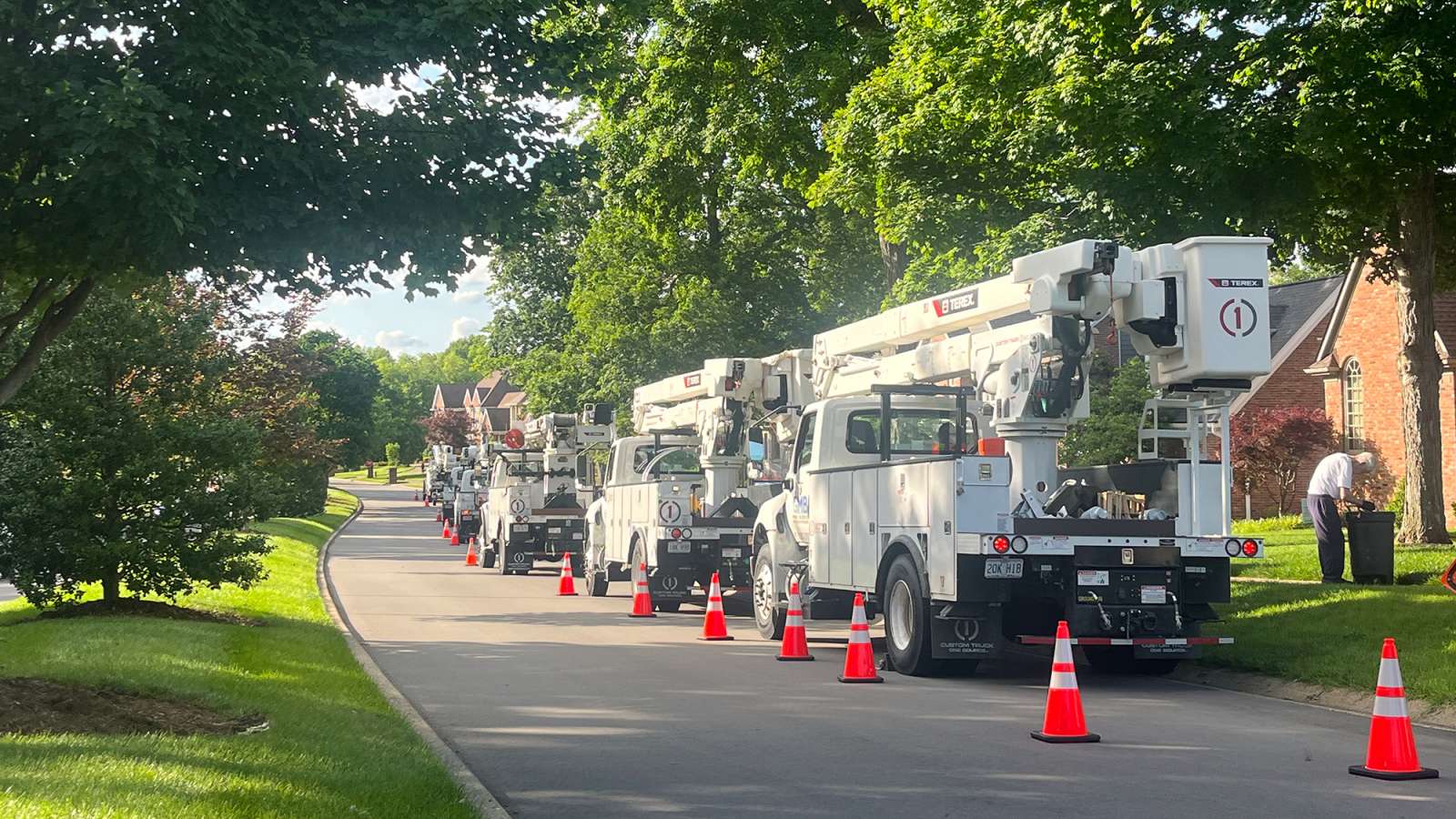Our hearts are heavy and with our communities across Kentucky as we work together to recover from Friday’s severe storms.
- While crews have made incredible progress restoring power safely and as quickly as possible since Friday’s severe weather, in some cases we are rebuilding equipment ravaged by the storm. Winds in excess of 80 miles per hour and at least three confirmed tornadoes across Kentucky resulted in nearly 1,000 reports of wires down and more than 200 broken poles.
- Nearly 114,000 customers were affected by this storm. At the peak of the storm, more than 62,000 customers were without power across our service area, and as of 3:30 p.m., we have about 1,200 customers without power. Said differently, we’ve restored service for more than 95 percent of our customers who were without power at the peak of the storm.
- About 1,100 restoration personnel (including line techs, safety specialists, damage assessors, vegetation management, and business partners who came to support us) are safely working in the hardest hit areas of our service territory to continue assessing and repairing damaged equipment, and for affected customers, restore their service safely and as quickly as possible.
Downed Wire Safety, Additional Safety Notes
- Safety is our top priority and we urge the public to stay away from downed wires – and to always assume they could be energized and report them to us immediately.
- LG&E customers
502-589-1444 or 800-331-7370 (fast path 1-1-3) - KU/ODP customers
800-981-0600 (fast path 1-1-2)
- Driving conditions can be extremely hazardous in areas where damage occurred, so please give our crews – as well as other essential response personnel – plenty of room to safely navigate hazards, as weather, traffic and road conditions can impact our crews’ ability to timely access and maneuver equipment in and around problem areas.
Outage Tools, Estimated Restoration Times
- Customers can report outages quickly and easily through our mobile app, by text or online. Visit lge-ku.com/outages for more information on all the ways you can report and receive information on your outage.
- As we safely and swiftly assess storm damage, we'll first provide area-wide estimated restoration times (ERTs) that give you an idea of when the majority of customers in your area can expect power to be restored.
- The area-wide ERTs initially shown on our outage map are then adjusted based on feedback from our crews. When our crews are able to get a firsthand look at the damage that caused an outage, they can determine the exact types of repairs needed to safely restore power and provide a more precise ERT for your outage, which will then be updated on our outage map.
- An important caveat is that each outage job is different and presents its own unique challenges for our crews, which is why estimated restoration times can vary by customer and are determined based on direct feedback from our crews in the field.
The Heavy Lifting of the Restoration Process
- Through our damage assessments, this storm produced more than 1,700 unique outage events, which are locations on our system where a power outage occurred and repair work is required.
- As we continue this work at the remaining 50 outage locations, we often refer to this stage of the process as the heavy lifting. These may be sections of our system that will restore service for 100 customers or fewer per event.
- It’s work often completed in tight spaces, requiring specialized equipment, and complex jobs completed by our highly trained line technicians and support personnel.
Restoration Process Overview
Service restorations take place through a prioritization process that involves several different layers. While we work to restore customers’ service, we’ll also use our ability to reroute power when we can from our control center, coupled with automated controls installed on our system, to limit the number of customers affected. During the restoration process:
- First, we’ll restore critical services in our community - hospitals, fire and police stations, airports and nursing homes.
- Next, we restore as many customers as we can as safely and quickly as possible.
- Then, we repair any damaged equipment. Whenever possible, temporary repairs are made to restore power quickly, and allow time for longer repairs to take place.
- For customers still without power, crews then make repairs to the individual power lines and service lines that feed directly to customers’ individual homes and businesses.
- Note: We have more than 40 crew centers across the state.
Additional Safety Tips
Ongoing System Maintenance and Infrastructure Investments
- As the risks of these more severe storms, wildfires and demand for energy continue to rise, LG&E and KU are working to mitigate the threats with stronger wires and poles; increasing vegetation management to further control this leading cause for power outages; and installing advanced technologies to identify and prevent outages. We have real-time system monitoring and automated technologies installed on our power lines and in substations. That technology, coupled with our advanced metering functionality being deployed across our service areas, allows us to pinpoint the location of a power outage quicker, reroute power where we can and limit the number of customers affected by the outage.
- Technology advancements, which include the ability to remotely make system adjustments from our control center when we anticipate extreme temperatures, and more real-time access to data and information has refined our preparedness process as well.
- While we continuously invest in our transmission and distribution systems, some equipment is reaching the end of its life, dating back to the 1920s, and poses a significant risk to system reliability. Currently, 55% of the wooden transmission poles are more than 60 years old and in need of replacement with steel structures that offer greater strength and durability against wind and ice; upgraded components, and, in some cases, additional lightning protection.
- Likewise, system hardening, real-time monitoring and automated technologies, coupled with advanced metering functionality, is greatly improving our distribution system. Since 2017, customers have collectively experienced 150,000 fewer power outages each year, preventing 27.7 million outage minutes in total. However, to maintain or improve this performance, the system not only needs additional stronger wires and poles, but upgrades to its aging substations, some of which are nearly 100 years old.


